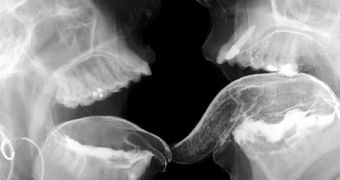X-rays have many uses in some very sensitive areas of technology. They are primarily used for diagnostic radiography and crystallography, but also in astronomy, microscopic analysis and fluorescence.
Digital color x-rays are an advancement of this technology and it's used in nuclear physics to search for elementary particles. The main advantage of building a color x-ray camera is the fact that it would be able to shrink the large-scale detection equipment used by nuclear physicists to the microscopic format.
B?rje Norlin, of the Mid Sweden University, is conducting a research that aims to develop new methods of enhancing the quality of color x-rays.
"With our digital color x-rays it will be possible to cut the radiation risk in half for x-ray examinations," says Norlin.
The electronic components of the camera must be squeezed into an area of 55 x 55 microns for each pixel and it will also have to be x-ray safe. The scientists at the MSU were able to solve these design problems and to create a camera called Medipic2, which can be used to reduce the radiation dosage in dental x-rays.
Other industry areas could also benefit from this technology to observe the consistency of materials using x-rays. The next generation of digital color x-ray cameras developed by the MSU uses advanced computer simulations and new applications to enhance the quality of color x-rays.
They will have higher resolution and will be able to show more colors of higher quality.
Few people now that x-rays are not fully invisible to the human eye. In special circumstances, they can be observed as a faint "blue-gray" glow which seems to originate within the eye itself. The dark-adapted naked eye can spot this form of ionizing radiation, and if the intensity of an X-ray beam is high enough, the ionization of the air will make the beam visible with a white glow.

 14 DAY TRIAL //
14 DAY TRIAL //